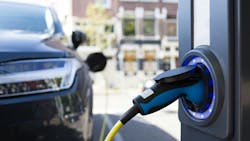NEMA Releases New Standard for Bidirectional Power Transfer from EVs to the Grid
The National Electrical Manufacturers Association (NEMA) has announced the publication of its Electric Vehicle Supply Equipment (EVSE) Power Export Permitting Standard. This new standard establishes technical parameters for enabling bidirectional power flow between electric vehicles (EVs) and the electrical grid, allowing EV owners to utilize their vehicles as mobile energy storage units.
The standard outlines key characteristics related to electrical performance, communication protocols, and cybersecurity to facilitate the permitting of power export from EVSE to an electric power system. By supporting vehicle-to-grid (V2G), vehicle-to-building (V2B), and vehicle-to-home (V2H) technologies, the standard provides guidance for using EVs as supplementary energy sources for homes, buildings, and the grid.
“Advancing bidirectional charging technologies will contribute to grid resiliency and allow electric vehicle owners to maximize the utility of their vehicles,” said Patrick Hughes, Senior Vice President, Technical Affairs, NEMA. “This standard serves as an important reference for local jurisdictions in permitting these systems.”
David Kendall, Director – Industry Affairs at ABB and a member of NEMA’s EVSE Power Export Working Group, added, “The Electric Vehicle Supply Equipment (EVSE) Power Export Permitting Standard provides essential guidelines to enhance safety and reliability in installations where power flows both to and from the grid. This standard represents a collaborative effort to support a more resilient and efficient energy infrastructure.”
Developed by NEMA’s Mobility Sector, the standard is intended to support the growing role of electrification in the energy sector and provide a framework for integrating EVs into the broader power system.
